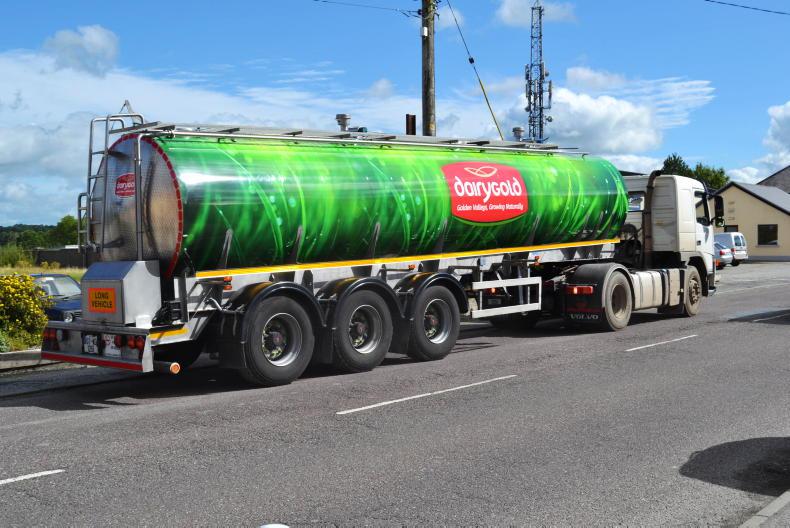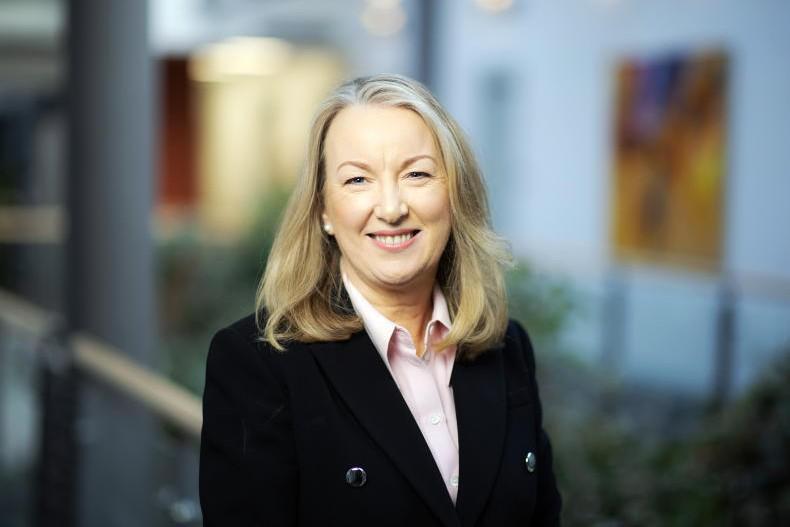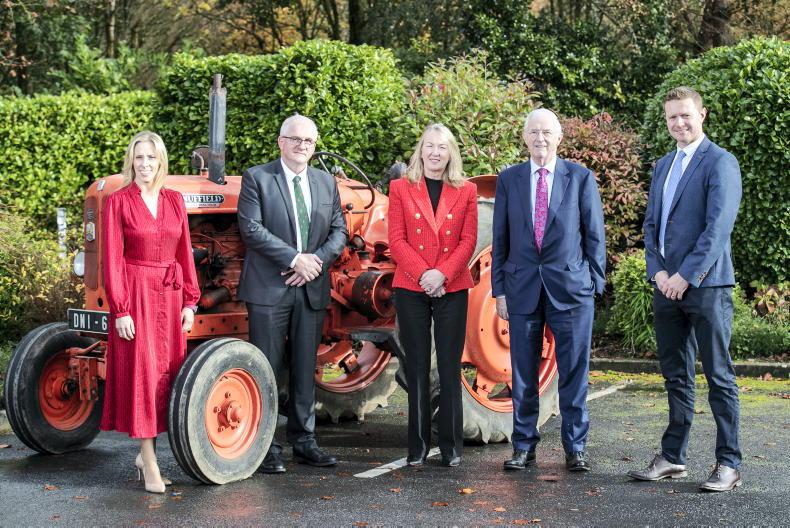Glanbia plc announced record earnings for the year ending December 2022, with group revenue jumping more than 20% to €5.6 billion. The Irish Farmers Journal sat down with Glanbia’s CEO Siobhan Talbot to talk through the results, what the group’s focus is and where its ambitions for the future are.
IFJ: This morning, along with the results, you announced the sale of Glanbia Cheese to your joint venture partner. What was the motivation behind the sale?
ST: The disposal of Glanbia Cheese makes sense for us as an organisation as it is not core to our plans for the future. As a joint venture, Glanbia had less of a role in the running of the business. I’m sure that Paul Vernon (CEO Glanbia Cheese) will continue to successfully run the operations. There is no change in the day-to-day operations expected from this transaction.
IFJ: This transaction does mean however that Glanbia no longer has any production facility in Ireland. You are also, from this year changing your reporting currency to US dollars. Does Glanbia have much of a connection to Ireland at all anymore, and do you see the headquarters moving to the US?
ST: No, for us, running a global business, having our headquarters here is complementary to our target of growing our businesses in the rest of the world.
We do maintain a significant footprint in Ireland, with our innovation centre and people that service brands and who are involved in the commercial side of the business. Our transaction and IT services are here.
Pretty much all of our intellectual property is here as well. Our senior leaders are here too. We do not have any plans to change our head office or relationship with Ireland.
IFJ: Your shares are listed in London and Dublin. Do you have any plans to list in America?
ST: No
IFJ: Turning back to cheese for a second, do the arguments in favour of selling the European cheese operations work for your US cheese operations? Will we be seeing that coming up for sale soon?
ST: The US operation is vastly different to the European one for Glanbia. In the US we are completely in charge of the operations of the business.
It is very much integrated with the group in a way that the joint-venture with Leprino Foods in Ireland was not. US Cheese is a major supplier of whey to our other brands, making it a key part of our supply chain.
IFJ: On the other side of that coin, are you looking at making further acquisitions? While Optimum Nutrition has been a huge success, some of the other purchases such as SlimFast haven’t worked out so well.
ST: Glanbia has bought a number of brands in the healthy lifestyle sector. In particular years there will be an ebb and flow between the performance of the brands, but the experience gained through building Optimum Nutrition to what is now a billion dollar revenue company can be used across the rest of the portfolio.
SlimFast is a great brand. In 2019 it was so strong and had phenomenal growth on the back of the popularity of the Keto diet. Consumers have been less inclined to that diet through COVID-19.
Looking ahead, we are involved in a rebrand of SlimFast. It is also worth mentioning, when speaking of complementary brands, the purchase of SlimFast gave Glanbia access to the likes of Walmart in the United States where we did not have much of a profile before.
IFJ: You previously spoke about the US consumer coming out of COVID-19 and having an increased interest in weight-loss. Are you seeing that now?
ST: It is slower than we expected. Our retail partners are telling us the same thing. It is happening, but it is slow.
IFJ: Glanbia’s share performance has been disappointing for the past few years. This is despite buying €170 million of stock in 2022 and announcing another €50 million this year. Are you buying stock because you have nothing else to do with the money?
ST: Our shareholders generally welcome our stock purchases. We think our shares are good value. Importantly, the stock buybacks in no way precluded us from doing mergers and aquisitions (M&A) activity.
IFJ: What are your M&A targets? Over the last few years the acquisitions have generally been on the smaller side, usually below $100 million.
ST: We generally have gone for bolt-on acquisitions, which have added value to the group. This does not mean we will not look at larger deals. However, the larger the deal, the greater the complexity and we are not under pressure to make any deal at all.
I believe that as long as we keep performing and are very clear about the strategic direction for the company, shareholders will understand what we are doing
IFJ: Looking back, much of the group’s growth has been organic rather than through acquisition. Do you see that the most likely path forward?
ST: Yes and no. We have really strong growth possibilities. Obviously organic growth is the ideal, but absolutely, it will be M&A growth as well.
We never limit ourselves with what we look at. Obviously we look at a lot more than we execute, but we will always be interested in that global health and wellness trend.
IFJ: Looking at your dividend, you’re at a rough yield of 2.5% at the moment, how will you react to shareholder pressure to increase that yield as global interest rates generally rise?
ST: What we have outlined is that we will pay a dividend based on a capital allocation ratio.
The sensible thing is to pay what you can afford based on what you earn and increase your dividend in a sensible way.
We have increased it 10% last year and 10% again this year. The feedback we get is that shareholders generally are comfortable with the blend of dividend, buyback and capital allocation we have.
IFJ: Many of your Irish shareholders have held their position with the group for decades. Why should they stick with you now that you are so far from your roots?
ST: I think Glanbia still has very strong roots in Ireland and in Kilkenny. Our job of work is to keep talking to current – and prospective – shareholders about the growth opportunity that exists with the company.
I believe that as long as we keep performing and are very clear about the strategic direction for the company, shareholders will understand what we are doing.
IFJ: You were appointed as CEO 10 years ago. What’s your future path with the company?
ST: Glanbia is a fantastic organisation to be part of and we’ve set out our strategic plan for 2023-2025 and I look forward to driving that on.
A lot of the Irish shareholders of Glanbia never intended to own a small part of a global leader in sports nutrition.
They were suppliers to various co-ops down the years who picked up shares and held them through mergers and flotations and splits to get to where they are now.
So the question is – why should they continue to hold them?
If we look at the chart, we can see that the performance of Glanbia’s stock price over the past few years has been fairly far from inspirational.
Holders might be tempted to cut their losses and sell their shares – there’s probably better things to do with the money. As Glanbia is listed on the stock exchange, selling the shares is very easy.
However, it might be worth having another look before selling, especially if you are a dairy farmer. Glanbia has, over the past two decades, moved very far from its dairy roots.
Fitness industry
The company’s exposure to the price of milk is now tiny compared to what it used to be. Instead, much of its revenue comes from the high-margin protein products it sells into the fitness industry.
For farmers, this means that the ebb and flow of Glanbia’s earnings – and consequently share price – will have little connection with the ebb and flow of milk prices.
So, owning shares in Glanbia gives farmers exposure to a completely different income source and therefore could be seen as decent portfolio diversification for them.










SHARING OPTIONS